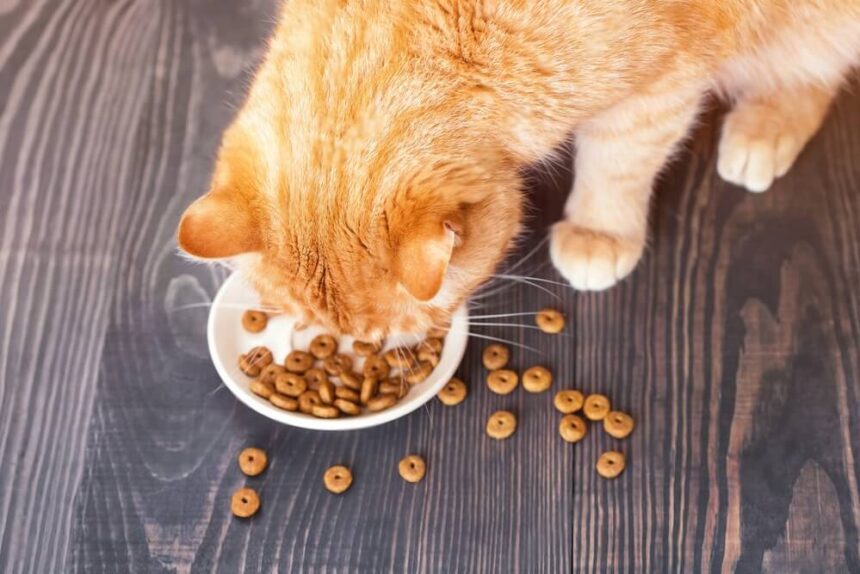Can I freeze dry cat food? This might be a question you’ve asked yourself if you’re looking to preserve your kitty’s meals in the best way possible. Freeze drying isn’t just for survivalists or gourmet chefs – it’s a fantastic method for keeping your pet’s food fresh, nutritious, and convenient.
What is Freeze Drying Anyway?
So, let’s dive into what freeze drying is. Essentially, freeze drying is a preservation method that removes water from food. This is done by freezing the food and then reducing the surrounding pressure. It allows the frozen water in the food to change directly from a solid to a gas, skipping the liquid phase. This process, called sublimation, leaves the food dry, lightweight, and incredibly shelf-stable.
Why is this good for cat food? Well, removing the moisture from food significantly reduces the risk of spoilage. Bacteria and mold need moisture to thrive, so taking it away makes the food last much longer.
Why Freeze Dry Cat Food?
Now, you might wonder, “Why should I freeze dry my cat’s food?” Here are some compelling reasons:
- Nutrient Preservation: Freeze drying locks in the nutrients. Unlike some other preservation methods, it doesn’t require high heat, which can destroy sensitive vitamins and minerals.
- Extended Shelf Life: Freeze dried foods can last for years if stored properly. This is perfect for stocking up on your cat’s favorite meals.
- Convenience: Freeze dried food is lightweight and easy to store. It’s great for travel, emergencies, or just simplifying your daily routine.
- Taste and Texture: Many cats prefer the taste and texture of freeze dried food. It can be rehydrated to a consistency that many felines find appealing.
The Basics: Can I Freeze Dry Cat Food at Home?
Yes, you can freeze dry cat food at home. However, it’s important to note that you’ll need a freeze dryer, which can be a significant investment. These machines are designed to handle the delicate process of freeze drying without compromising the food’s integrity.
Here’s how you can do it:
Get a Freeze Dryer
First things first, you need a freeze dryer. These machines aren’t cheap, but if you’re serious about preserving your cat’s food long-term, they’re worth the investment. Look for models specifically designed for home use.
Preparing the Cat Food
Select the cat food you want to freeze dry. You can use commercial cat food, homemade meals, or even raw diets. Make sure the food is in small, manageable pieces – this helps the freeze drying process work more effectively.
Loading the Freeze Dryer
Follow the manufacturer’s instructions for loading the food into the machine. Typically, you’ll spread the food out on trays. Avoid overcrowding the trays to ensure even drying.
Running the Machine
Turn on the machine and let it do its thing. The process can take several hours to a couple of days, depending on the food and the freeze dryer model. Be patient – good things come to those who wait!
Storing the Freeze Dried Cat Food
Once the food is dried, transfer it to airtight containers. Mason jars, vacuum-sealed bags, or any container that keeps out moisture and air will work. Store the containers in a cool, dark place.
How Long Does Freeze Dried Cat Food Last?
One of the biggest perks of freeze drying is the extended shelf life. Properly stored, freeze dried cat food can last for months or even years. This makes it a fantastic option for emergency preparedness or just reducing the frequency of shopping trips.
Rehydrating Freeze Dried Cat Food
When it’s time to feed your cat, you’ll need to rehydrate the food. This is simple—just add water. The amount of water you add can vary depending on the brand and type of food, so check the packaging or guidelines from your freeze dryer’s manufacturer. Typically, you’ll let the food soak for a few minutes until it reaches the desired consistency.
Cats Try Reconstituted Primal Raw Freeze Dried Cat Food
The Benefits of Freeze Drying Over Other Methods
Freeze drying has several advantages over other food preservation methods:
- Dehydration: While dehydration also removes water, it uses heat, which can destroy some nutrients. Freeze drying, on the other hand, retains most of the food’s original nutrients.
- Canning: Canning is another preservation method, but it involves high heat and often adds preservatives. This can alter the taste and nutritional content of the food.
- Freezing: Regular freezing preserves nutrients well but can change the texture of food and requires constant power to keep the food frozen.
Freeze Drying vs. Commercial Freeze Dried Cat Food
You might be wondering why you should bother freeze drying food at home when you can just buy commercial freeze dried cat food. Here are a few reasons:
- Control Over Ingredients: When you freeze dry your cat’s food at home, you control exactly what goes into it. This is especially important if your cat has dietary restrictions or allergies.
- Cost: While the initial investment in a freeze dryer is significant, over time it can be more cost-effective than buying commercial freeze dried food.
- Quality: Homemade freeze dried food can be fresher and of higher quality, especially if you use premium ingredients.
Practical Tips for Freeze Drying Cat Food at Home
Start Small
If you’re new to freeze drying, start with small batches. This helps you get the hang of the process without wasting too much food if something goes wrong.
Experiment with Different Foods
Try freeze drying different types of cat food—wet, dry, raw, homemade. This can help you figure out what your cat prefers and what works best with your freeze dryer.
Label Everything
Always label your containers with the date you freeze dried the food. This helps you keep track of how long it’s been stored and ensures you use the oldest food first.
Store in Small Portions
It’s a good idea to store the food in small, single-serving portions. This makes it easier to rehydrate just the right amount and reduces the risk of waste.
Keep it Clean
Ensure all equipment and containers are thoroughly cleaned and dried before use. This helps prevent contamination and spoilage.
How to Store Dry Cat Food?
Dry cat food is a great option for cats who are picky eaters or who need to lose weight.
But how do you store dry cat food to stay fresh and not spoil? Here are some tips for storing dry cat food:
➤ Store dry cat food in a cool, dry place. A pantry or cupboard is ideal. Avoid storing dry cat food in direct sunlight or near any heat source.
➤ Keep the container of dry cat food closed when not in use. This will help keep out moisture and pests.
➤ If you have an open bag of dry cat food, transfer it to an airtight container.
A Mason jar works well for this purpose. Be sure to label the container with the date opened and expiration date (if applicable).
Following these simple tips can help ensure that your dry cat food stays fresh and nutritious for your feline friend!
Should I Refrigerate Dry Cat Food?
If you have ever wondered whether or not you should refrigerate dry cat food, the answer is no.
Dry cat food does not need to be refrigerated; in fact, doing so can adversely affect the food’s quality.
When dry cat food is stored in a cool, dry place, it helps to keep the vitamins and nutrients from deteriorating.
However, if you live in a warm climate, it is best to store dry cat food in an airtight container in the refrigerator to keep it fresh.
Freeze Cat Food For Automatic Feeder
If you have an automatic pet feeder, you may wonder if you can freeze cat food.
The answer is yes! Freezing cat food is a great way to make sure your kitty always has a fresh, nutritious meal.
Here’s how to do it:
1. Choose high-quality cat food that is free from preservatives and fillers.
2. Place the desired amount of cat food into an airtight container.
3. Freeze the cat food for up to six months.
4. When ready to use the frozen cat food, thaw it in the refrigerator overnight before serving.
Is It Ok To Freeze Cat Food?
When it comes to freezing cat food, there are a few things you need to keep in mind.
First, always check the manufacturer’s recommendations. Some foods may not be suitable for freezing.
Second, make sure the food is properly sealed and labeled before freezing.
This will help prevent freezer burn and contamination.
Finally, only freeze small portions at a time so that your cat can eat the food fresh.
If you follow these guidelines, freezing cat food can be a great way to extend its shelf life and keep your kitty happy and healthy!
Conclusion
Freeze drying cat food is a fantastic way to ensure your feline friend always has access to fresh, nutritious meals. It’s a bit of an investment upfront, but the benefits in terms of nutrient retention, convenience, and long-term storage make it worthwhile. Whether you’re a seasoned pet owner or new to the world of freeze drying, this method can revolutionize how you store and serve your cat’s food.
So, can I freeze dry cat food? Absolutely. With the right equipment and a bit of know-how, you can provide your cat with top-quality, long-lasting meals. Happy freeze drying!



